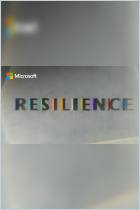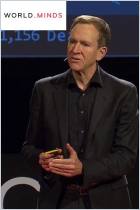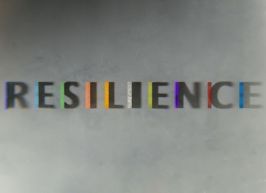Join getAbstract to access the summary!

Join getAbstract to access the summary!
Microsoft | ALT Stories
A Mission-Oriented Approach: Designing for Societal Resilience
We define resilience as the capacity to anticipate, absorb, and adapt to disruption.
Microsoft, 2021
What's inside?
New technology supports societal resilience by controlling data about vaccines and human trafficking.
Recommendation
Microsoft’s new online tech hub describes its latest insights about new technology breakthroughs, including “reinforcement learning,” smart devices and advice for using technology for social benefits. One section of the hub focuses on designing businesses and communities to achieve better societal resilience, and how to tackle system vulnerability’s causes and results. Among the equation’s viable parts are COVID-19 and human trafficking.
Take-Aways
- Innovation hinges on our ability to see the world differently.
- Technology can provide tools that are “designed for the speed of a crisis and the context of a crisis zone.”
- A resilient society acknowledges and attacks systemic issues that promote human trafficking.
- The basis for developing technology following a community-first approach is long-term collaboration.
- “Organizational resilience” can help explain why some companies better succeed during times of change.
- Two key metrics represent workgroup collaboration and relationship fluidity.
- During the COVID-19 pandemic, societal sectors most at health risk were often the hardest to reach.
- VCI offers secure, private access to vaccination records.
Summary
Innovation hinges on our ability to see the world differently.
Global challenges keep showing us how fragile our world is. To prevent crises arising from global challenges, people must learn to look at the world differently and quickly adapt to changing environments.
“Innovation hinges on our ability to see the world differently, breaking down barriers and looking between the lines in an effort to solve some of the world’s toughest challenges. This includes the empowerment of people in communities who experience issues first-hand.” (Chris White)
Solutions that are adaptive, inclusive and facilitate decision-making require people to overcome barriers and embrace the contributions of diverse minds.
Technology can provide tools that are “designed for the speed of a crisis and the context of a crisis zone.”
Technology that is capable of “societal scale problem-solving” needs to be designed differently from existing technology. Rather than being efficient, it must gain the capacity to be responsive, relevant and scale to a range of typical challenges that different types of crises share.
“We’re doing this by creating a tool set of open technologies that can be rapidly combined and redeployed.” (Chris White)
Such technology uses AI to identify patterns in real-world data and finds diverse applications including the fight against digital crimes, corruption, theft and human trafficking.
A resilient society acknowledges and attacks systemic issues that promote human trafficking.
In 2018, Microsoft jointly founded the Tech Against Trafficking (TAT) coalition, undertaking long-term projects with other organizations to fight global human trafficking. Shared practices, data and tools help to protect the safety and privacy of victims, and promote the timely sharing of critical information. Crisis events fuel such systematic servitude.
“Human traffickers are almost always the first responders to crisis zones around the world. Whether an environmental catastrophe or a military conflict or a sudden economic collapse, whenever crisis strikes, women, children, the poor and outcastes are disproportionately affected, exploited and recruited by traffickers.” (Siddharth Kara, Modern Slavery: A Global Perspective, 2017)
Eliminating human trafficking requires investment in prevention, protection and prosecution, supported by critical partnerships in private and public sectors.
The first TAT initiative led to the development of an interactive map that enabled “tool discovery, gap identification and technology advocacy.” The second initiative, which pooled data from Polaris, IOM and Liberty Shared, created a database to identify trafficking victims. The data can be accessed through interactive maps, dashboards, data sets and data narratives. Victim privacy is ensured through the use of aggregate and synthetic data instead of actual names and personal information. No user can specifically identify individuals or combinations of attributes.
Group-level data protection becomes important when a trafficker controls a trafficking route between countries. Larger groups of data points prevent traffickers from detecting small, precise changes, using them to retaliate against individuals.
“Our algorithm for generating synthetic data achieves such control through what we call k-synthetic anonymity: The records of the synthetic data set are constructed such that all combinations of attribute values are common in the sensitive data set.”
IOM is adopting TAT to change how victim data is provided to counter-trafficking organizations using channels such as the Counter Trafficking Data Collaborative (CTDC) data hub. The open-source “Microsoft/synthetic-data-showcase solution” is combined with another TAT accelerator outcome, the “Human Trafficking Case Data Standard.” Both are incorporated by the United Nations Office on Drugs and Crime, into a guidance manual for law enforcement, government agencies and other stakeholders.
TAT supports consistent data that strengthens global anti-trafficking policies. It fights against forced labor, exploitation and child abuse in at-risk populations. Crises require anonymous data set management, allowing necessary views by those legitimate individuals who cannot pool their own data for privacy or regulatory reasons.
The basis for developing technology following a community-first approach is long-term collaboration.
One year ago, Microsoft started a project with communities as co-designers of new technology. For it to be successful, “face-to-face conversations,” and “human-to-human collaboration” was essential.
“We have to involve expertise like social theory, qualitative study and ethnography.” (Chris White)
Investing time to build relationships allowed Microsoft to better understand the impact of new technologies over time.
People must focus on agile collaboration to be ready and resilient when the next crisis strikes.
“Organizational resilience” can help explain why some companies better succeed during times of change.
When a crisis pushes an organization beyond its normal limits, pressure grows to adapt quickly. Adaptation failure threatens profitability and even an organization’s survival. Digital transformation facilitates resilience. The COVID-19 pandemic presents a number of such examples.
Microsoft used its Workplace Analytics (WPA) to study how crises like this impact a company’s ability to respond and learn how the pandemic affected them. WPA explores how “graph statistics” can apply to Organizational Network Analysis (ONA), and reveals how work gets accomplished. Network visualization maps out organizational structure based on “pairwise collaboration” between individuals. Outlook and Teams meetings and messages are studied to identify workgroup organization. This model can be contrasted with standard organization charts’ traditional reporting.
The workgroup maps revealed new organizational perspectives. This includes concepts like “stretched” and “siloed” workgroups, and raises questions such as how effectively workgroups interact with reporting structures and how well workgroups collaborate and work together over time. This leads to a better understanding of the organization’s cooperative culture.
Two key metrics represent workgroup collaboration and relationship fluidity.
COVID-19 inspired Microsoft to study these metrics to learn about general organizational health. Organizations that embraced employees working from home captured interactions in these digitally transformed workplaces, helping them better understand structural resilience.
Microsoft began to understand COVID-19’s impacts, such as “churn,” which refers to collaborations lost from one period to the next. Resilient organizations should experience less churn. But the study showed that while most employees maintained or expanded collaborations, organizations’ leadership teams experienced dramatic churn levels. By contrast, large-scale churn throughout the company would represent a “panic response” as disrupted connections and shrinking networks encourage people to cling to familiar people and work parameters.
Expanding this analysis across thousands of industries and organizations, the latest Microsoft Work Trend Index incorporated billions of email and meeting interactions. It shows increases in workgroups and strong group boundaries. Those smaller, more defined pandemic silos look different from those of pre-pandemic workgroups. This suggests resiliency in response to an emergency. The question of whether these structures retain resiliency over time remains open.
During the COVID-19 pandemic, societal sectors most at health risk are often the hardest to reach.
Health care inequity during the pandemic continues to be perpetuated by complicated eligibility rules. Starting in January 2021, COVID-19 vaccine distribution caused pervasive confusion, with rules varying by state or even by county. The system’s complexity and information gaps caused health care equality concerns.
Microsoft designed its chatbot to determine vaccine eligibility and distribute policy updates throughout the United States. Users accessed the bot through a browser, SMS, or WhatsApp. Researchers found that outdated and inaccurate data caused much of the confusion, so they partnered with health care resources to audit and curate the information as it changed. GitHub became vaccine eligibility data’s central repository.
“To support rapid updates and adaptation to other contexts, we developed a simple data schema that could capture a hierarchy of regional policies using the familiar nested filesystem model.”
A Microsoft Management Portal provided “data editing tools” for non-technical users. The COVID-19 Vaccine Eligibility Bot was deployed to TheFightIsInUs.org in March 2021. The Fight Is In Us organization represents coalitions, NGOs and other groups that promote virus therapeutics such as convalescent plasma. This nonprofit coalition uses bots to distribute information about several blood therapeutics and vaccinations. The Vaccine Eligibility Bot was also integrated into the Bing search engine.
As the US government began to clarify eligibility, the bot’s focus shifted to finding available vaccine locations. The bot may soon be used to deal with international eligibility, and booster shots. Similar bots could be deployed for other complex community emergencies.
“Most importantly, it shows a small but significant way in which we can promote more equitable distribution of essential resources, services and support – for vaccines, health care, and beyond.”
Governments and businesses should work to develop open-source data management tools before the next crisis occurs. In that case, they could be ready for implementation on day one.
VCI offers secure, private access to vaccination records.
VCI, a coalition of private and public organizations, provides private access to verifiable copies of vaccination records in paper or digital form. VCI works to establish community and open technology standards.
Using open, interoperable standards, VCI sends signed clinical data connected to an individual identity using the “SMART Health Cards framework.” People can use these credentials to prove vaccination status and safely return to school, work and personal life.
Organizations using the SMART Health Cards framework will help to test and refine the system. To avoid inequities, people without smartphones can receive a paper printed with codes that verify their status.
Overall, building a “resilience toolbox” with open technologies that can be quickly deployed helps to hasten adaptation to emerging health scenarios and other emergencies. Real-world observational data helps researchers to visualize causal factors and interpret data. This way communities can react quickly and meet urgent demands.
About the Author
Microsoft Corporation is an American multinational technology corporation that produces computer software, consumer electronics, personal computers, and related services.
This document is restricted to personal use only.




















Comment on this summary